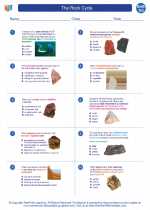Carboniferous Period
The Carboniferous period is a geologic period that lasted from about 359 to 299 million years ago. It is known for the vast deposits of coal that formed during this time, hence the name "Carboniferous" which means "coal-bearing" in Latin.
Environment
The Carboniferous was a time of significant geological, climatic, and evolutionary changes. It was characterized by extensive swampy forests and high levels of atmospheric oxygen. These conditions were ideal for the growth of large, tree-sized plants such as ferns, horsetails, and early seed-bearing plants.
Climate
The climate during the Carboniferous was generally warm and humid, with the equator experiencing tropical conditions and the poles being covered in ice caps. The high levels of atmospheric oxygen also facilitated the growth of giant insects, some with wingspans of over 2 feet.
Life Forms
The Carboniferous period saw the evolution of early reptiles and the diversification of amphibians. The large forests provided habitats for a variety of terrestrial and aquatic organisms, including early insects, spiders, and fish.
Study Guide
- What does the term "Carboniferous" mean?
- Describe the environmental conditions during the Carboniferous period.
- What types of plants thrived during the Carboniferous?
- How did the climate vary during the Carboniferous?
- What types of organisms evolved during the Carboniferous?
◂Earth Science Worksheets and Study Guides High School. The Rock Cycle

 Worksheet/Answer key
Worksheet/Answer key
 Worksheet/Answer key
Worksheet/Answer key
 Worksheet/Answer key
Worksheet/Answer key
 Vocabulary/Answer key
Vocabulary/Answer key
 Vocabulary/Answer key
Vocabulary/Answer key
 Vocabulary/Answer key
Vocabulary/Answer key
